分 类 号
U D C
密 级
编 号 10486
硕 士 学 位 论 文
3D Tiles 定义解析与生产规范设计
——以三维建筑物瓦片为例
研 究 生 姓 名 : 曹 浩 泽
学
号 : 2015202140079
指导教师姓名、职称 : 孙海燕 教授
专 业 名 称 : 地图制图与地理信息工程
研 究 方 向 : 地理信息系统
二 〇 一 八 年 五 月
�
Analysis for 3D Tiles definition and design
for production standard
——take 3D building tiles as an example
By
Cao Haoze
Supervised by
Professor. Sun Haiyan
School of Geodesy and Geomatics, Wuhan University
Wuhan 430079, P.R.China
May, 2018
�
论文原创性声明
本人郑重声明:所呈交的学位论文,是本人在导师指导下,独立
进行研究工作所取得的研究成果。除文中已经标明引用的内容外,本
论文不包含任何其他个人或集体已经发表或撰写过的研究成果。对本
文的研究做出贡献的个人和集体,均已在文中以明确方式标明。本声
明的法律结果由本人承担。
学位论文作者(签名):
年 月 日
�
�
3D Tiles 定义解析与生产规范设计——以三维建筑物瓦片为例
摘要
Cesium 是一个基于 WebGL 和 JavaScript 的开源三维地球引擎,可以在浏览
器端实现以三维虚拟地球为主要场景的网络应用。为了便于网络传输与浏览器渲
染,Cesium 研发团队制定了代表海量三维数据的数据结构 3D Tiles。但是,3D
Tiles 的定义十分抽象,其描述事物的方式介于三维模型范畴与地理要素范畴之
间,使研究者难以客观全面地理解其含义。3D Tiles 的兼容性很高,官方对其灵
活的数据结构缺少充分的解释,同时缺少可供参考的生产规范。这种抽象灵活的
数据定义提高了数据解析与应用的复杂度,不利于数据在生产应用上保持一致。
为了使研究者能够全面客观地理解 3D Tiles 定义,统一 3D Tiles 在生产与应
用上的数据“风格”,本文以 WebGL 渲染机制和 Cesium 地球框架的基本原理作
为基础,对 3D Tiles 的抽象性与兼容性进行了深入解读与剖析。指出了 3D Tiles
在生产与应用上的问题,并提出生产规范的基本设计原则。对于使用 3D Tiles 展
示三维建筑物模型这一应用,对 3D Tiles 的数据结构进行设计,并结合不同数据
采集方式制定完整的数据生产与转化流程,同时分析并介绍了生产中可能会用到
的关键技术。在试验中,以地理要素数据集为数据源生产表达三维建筑物的 3D
Tiles。本文的工作为数据生产和应用的研究人员提供十分宝贵的参考依据。
关键词:3D Tiles、定义解析、数据结构、生产规范
I
�
武汉大学硕士学位论文
Abstract
Cesium is an open source 3D earth engine based on WebGL and JavaScript. It can
implement web applications with 3D virtual earth as the main scene at the browser end.
To facilitate network transmission and browser rendering, Cesium's R&D team
developed 3D Tiles, a data structure that represents massive 3D data. However, the
definition of 3D Tiles is very abstract, and its way of describing things lies between the
category of 3D models and the category of geographic elements, making it difficult for
researchers to understand their meaning objectively and comprehensively. 3D Tiles has
a very strong compatibility, and the official lacks sufficient explanations for its flexible
data structure that makes researchers lack production standards as reference. This
abstract and flexible data definition increases the complexity of data parsing and
application, which is not conducive to make data production and application consistent.
In order to enable researchers to comprehensively and objectively understand the
definition of 3D Tiles and unify the data “style” of production and application, this
paper makes an in-depth interpretation and analysis to the abstraction and compatibility
of 3D Tiles, which is based on the basic principles of the WebGL rendering mechanism
and the Cesium earth framework. This article points out the problems in the production
and application of 3D Tiles, and puts forward the basic principles for the design of
production standards. For the application of displaying 3D building models using 3D
Tiles, the data structure of 3D Tiles is designed, and a complete data production and
conversion process is formulated considering different data collection methods. At the
same time, the key technologies that may be used in production are analyzed and
introduced. In the experiment, 3D Tiles representing 3D buildings were produced using
geographic feature datasets as data sources. The work of this paper provides valuable
reference for researchers in data production and application.
Key words: 3D Tiles, definition analysis, data structure, production standards
II
�
3D Tiles 定义解析与生产规范设计——以三维建筑物瓦片为例
目录
摘要................................................................................................................................ I
Abstract ......................................................................................................................... II
第一章 绪论.................................................................................................................. 1
1.1 研究背景与现状 ............................................................................................. 1
1.1.1 研究背景 ............................................................................................... 1
1.1.2 国内外研究现状 ................................................................................... 2
1.2 研究问题阐述 ................................................................................................. 5
1.3 研究意义与重要性 ......................................................................................... 6
1.4 本文研究内容与成果 ..................................................................................... 7
1.5 文章组织结构 ................................................................................................. 7
第二章 Cesium 框架的技术原理与数据标准 ............................................................ 9
2.1 Cesium 框架与 WebGL ................................................................................... 9
2.1.1 Cesium 简介 ........................................................................................... 9
2.1.2 Cesium 框架与 WebGL 渲染机制 ...................................................... 10
2.1.3 Cesium 三维地球的数学框架 ............................................................. 12
2.2 Cesium 框架的数据标准 glTF ...................................................................... 17
2.2.1 glTF 简介 ............................................................................................. 17
2.2.2 glTF 定义的三维数据结构 ................................................................. 18
2.2.3 glTF 定义与三维模型 ......................................................................... 24
2.2.4 glTF 的局限性 ..................................................................................... 25
2.3 本章小结 ....................................................................................................... 26
第三章 3D Tiles 的定义与特性 ................................................................................. 27
3.1 3D Tiles 简介 ................................................................................................. 27
3.2 3DTiles 数据结构 .......................................................................................... 28
3.2.1 瓦片集数据与瓦片索引 ..................................................................... 28
III
�
武汉大学硕士学位论文
3.2.2 瓦片数据 ............................................................................................. 31
3.3 3D Tiles 特性剖析 ......................................................................................... 33
3.3.1 具体应用信息缺省 ............................................................................. 33
3.3.2 瓦片索引机制自由 ............................................................................. 34
3.3.3 对象映射机制自由 ............................................................................. 35
3.3.4 位置变换机制多样 ............................................................................. 36
3.3.5 细节层次配置多样 ............................................................................. 37
3.3.6 属性数据配置多样 ............................................................................. 38
3.4 本章小结 ....................................................................................................... 39
第四章 3D Tiles 与生产应用 ..................................................................................... 40
4.1 3D Tiles 定义的问题 ..................................................................................... 40
4.2 3D Tiles 与数据生产 ..................................................................................... 40
4.2.1 常见数据生产方式 .............................................................................. 40
4.2.2 3D Tiles 生产的难点 ........................................................................... 41
4.3 3D Tiles 与数据应用 ..................................................................................... 43
4.3.1 常见应用需求 ..................................................................................... 43
4.3.2 3D Tiles 应用的难点 ........................................................................... 45
4.4 生产规范设计原则 ....................................................................................... 47
4.5 本章小结 ....................................................................................................... 47
第五章 建筑物瓦片生产规范与关键技术................................................................ 48
5.1 应用需求与数据结构 ................................................................................... 48
5.1.1 基本需求 ............................................................................................. 48
5.1.2 高阶需求 ............................................................................................. 49
5.1.3 需求矛盾 ............................................................................................. 49
5.2 关键技术原理 ............................................................................................... 50
5.2.1 地理实体匹配 ..................................................................................... 50
5.2.2 多层坐标框架 ..................................................................................... 51
5.2.3 多层细节等级 ..................................................................................... 52
IV
�


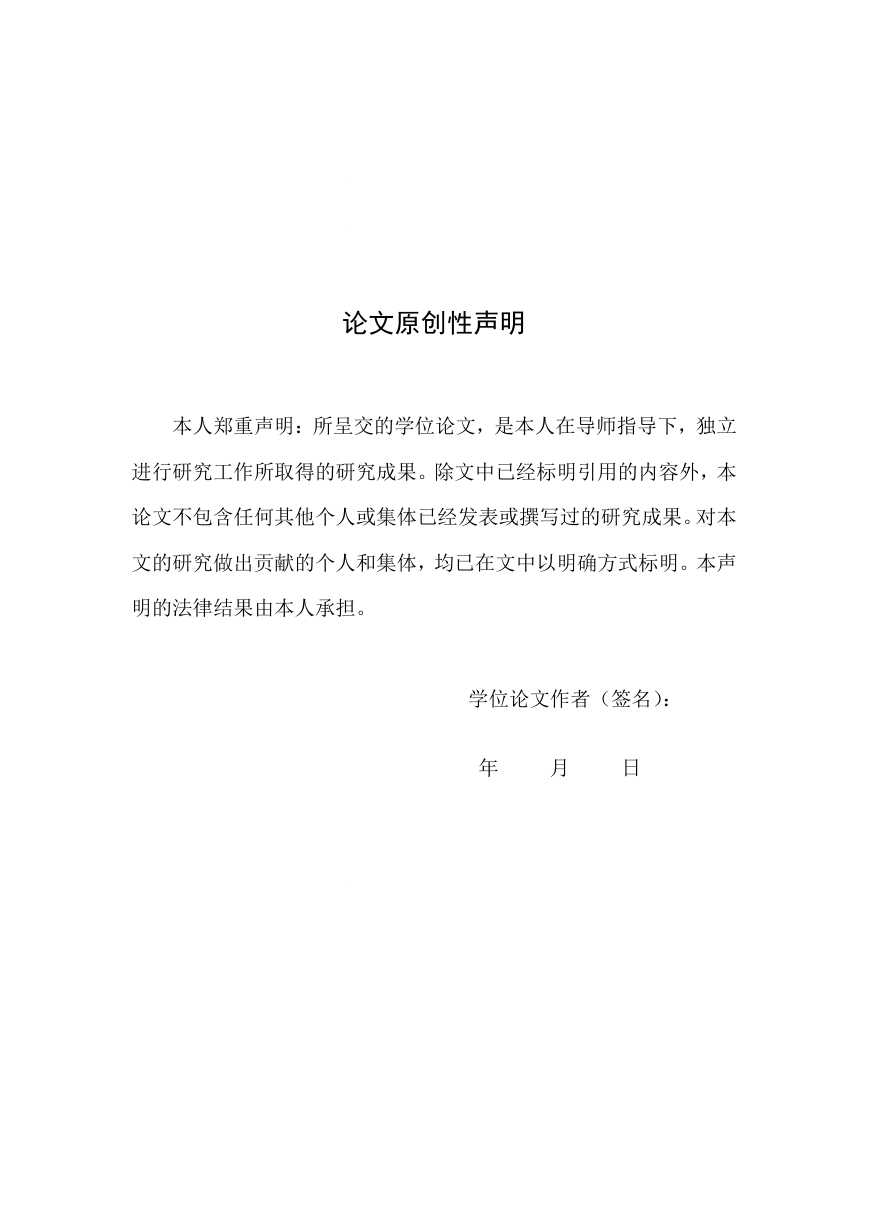

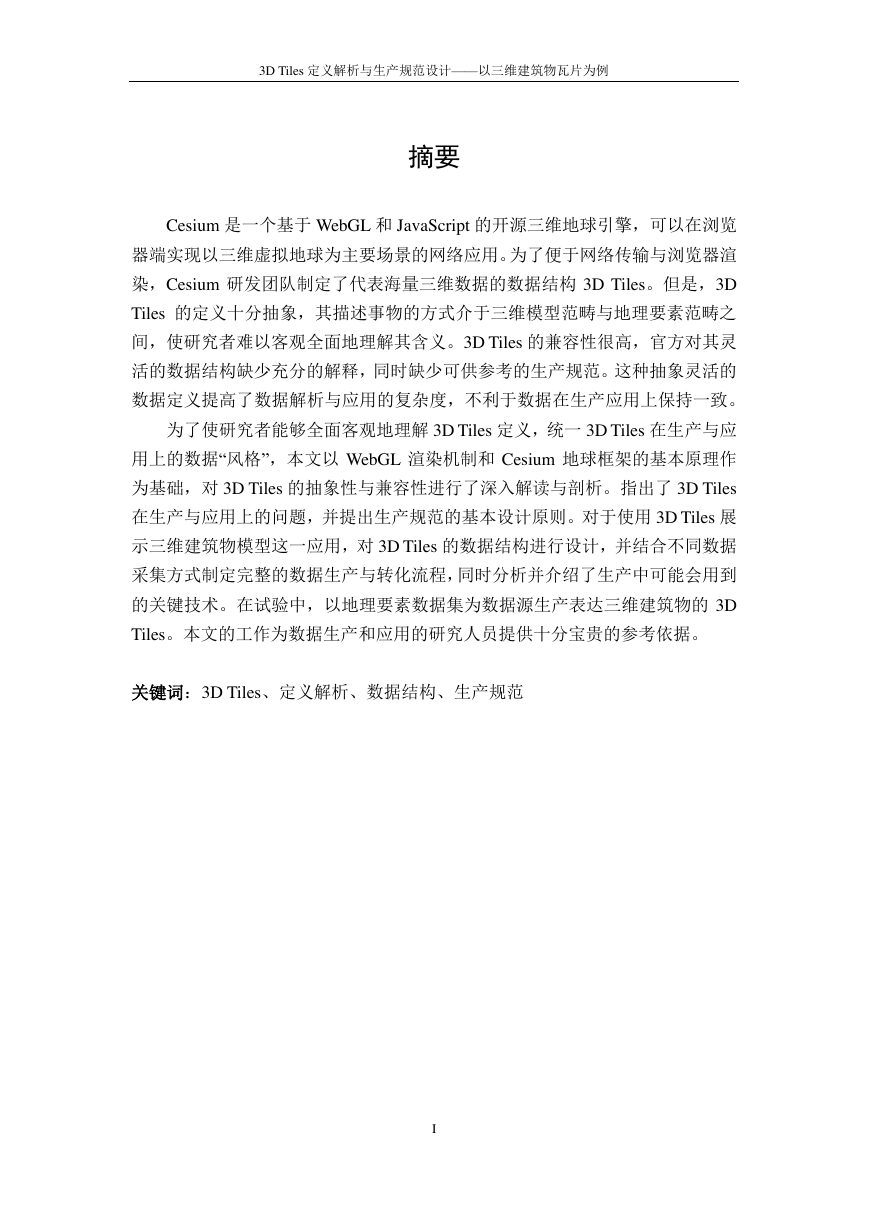
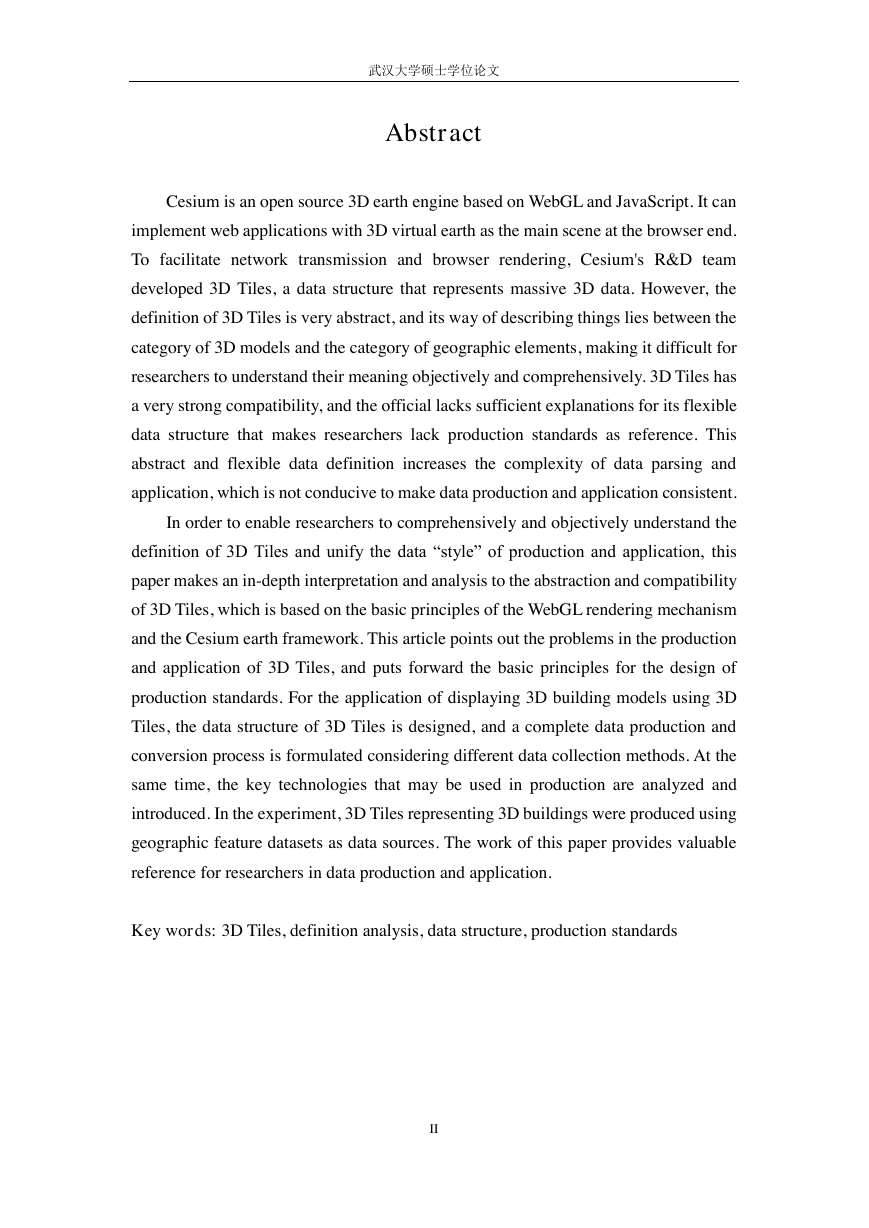
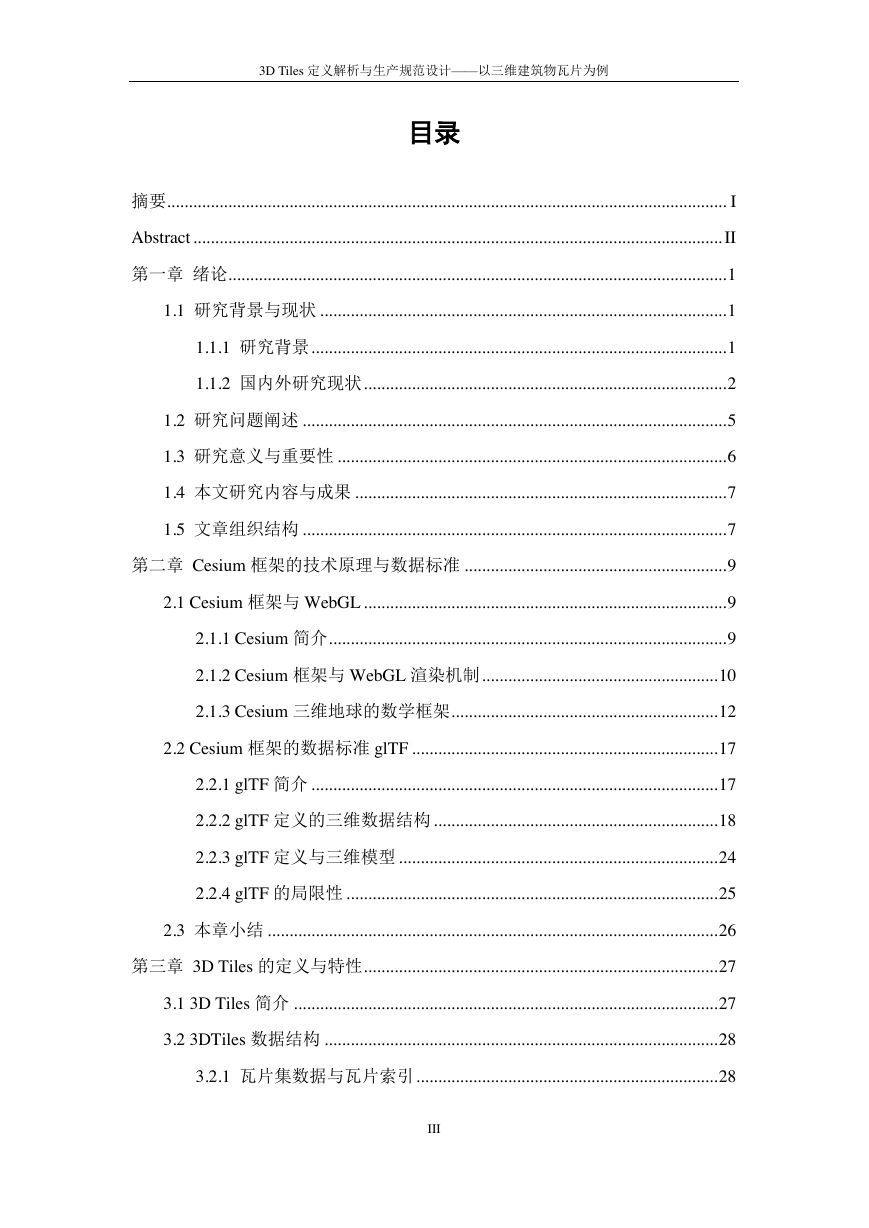
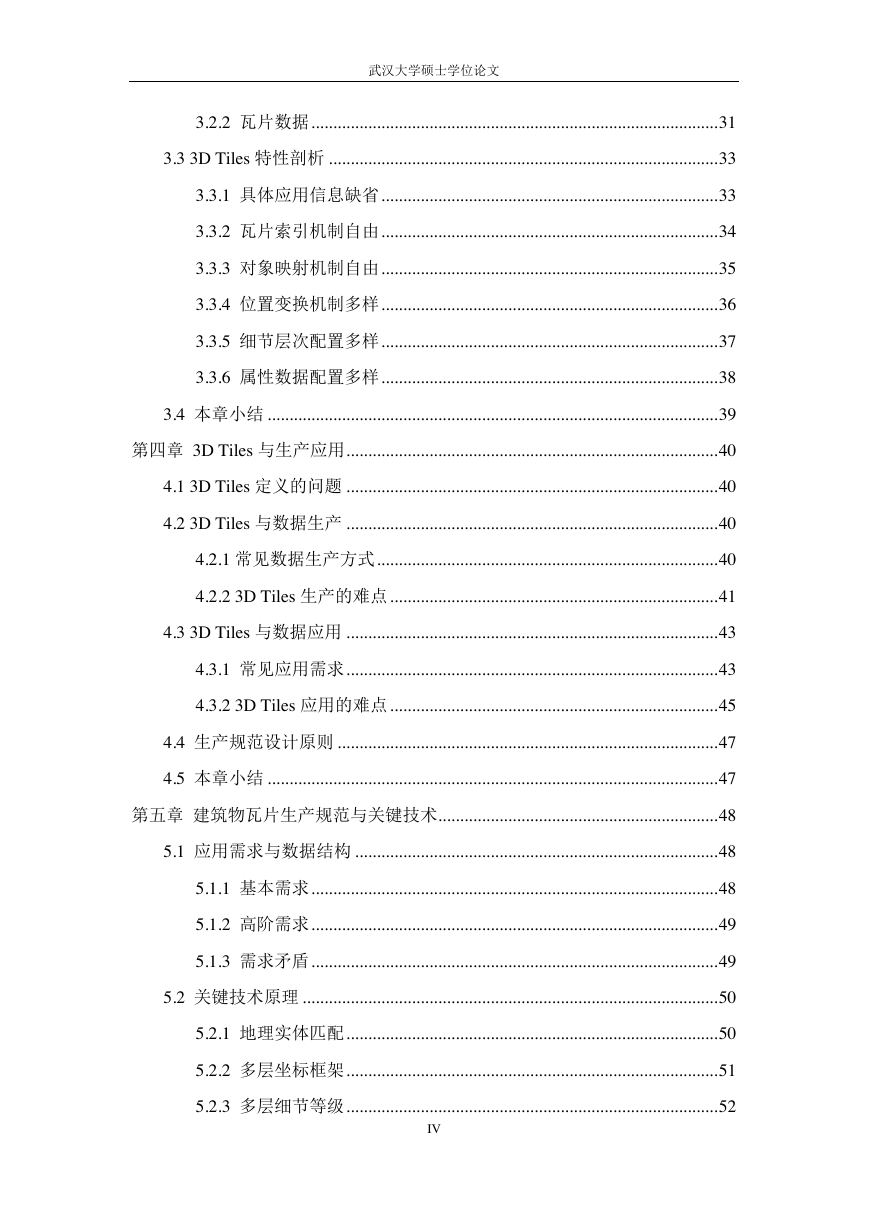








 2023年江西萍乡中考道德与法治真题及答案.doc
2023年江西萍乡中考道德与法治真题及答案.doc 2012年重庆南川中考生物真题及答案.doc
2012年重庆南川中考生物真题及答案.doc 2013年江西师范大学地理学综合及文艺理论基础考研真题.doc
2013年江西师范大学地理学综合及文艺理论基础考研真题.doc 2020年四川甘孜小升初语文真题及答案I卷.doc
2020年四川甘孜小升初语文真题及答案I卷.doc 2020年注册岩土工程师专业基础考试真题及答案.doc
2020年注册岩土工程师专业基础考试真题及答案.doc 2023-2024学年福建省厦门市九年级上学期数学月考试题及答案.doc
2023-2024学年福建省厦门市九年级上学期数学月考试题及答案.doc 2021-2022学年辽宁省沈阳市大东区九年级上学期语文期末试题及答案.doc
2021-2022学年辽宁省沈阳市大东区九年级上学期语文期末试题及答案.doc 2022-2023学年北京东城区初三第一学期物理期末试卷及答案.doc
2022-2023学年北京东城区初三第一学期物理期末试卷及答案.doc 2018上半年江西教师资格初中地理学科知识与教学能力真题及答案.doc
2018上半年江西教师资格初中地理学科知识与教学能力真题及答案.doc 2012年河北国家公务员申论考试真题及答案-省级.doc
2012年河北国家公务员申论考试真题及答案-省级.doc 2020-2021学年江苏省扬州市江都区邵樊片九年级上学期数学第一次质量检测试题及答案.doc
2020-2021学年江苏省扬州市江都区邵樊片九年级上学期数学第一次质量检测试题及答案.doc 2022下半年黑龙江教师资格证中学综合素质真题及答案.doc
2022下半年黑龙江教师资格证中学综合素质真题及答案.doc